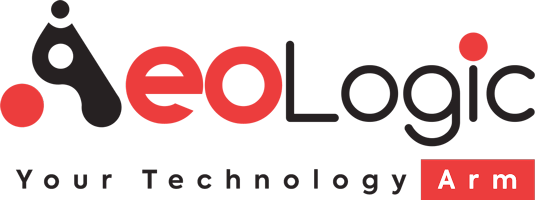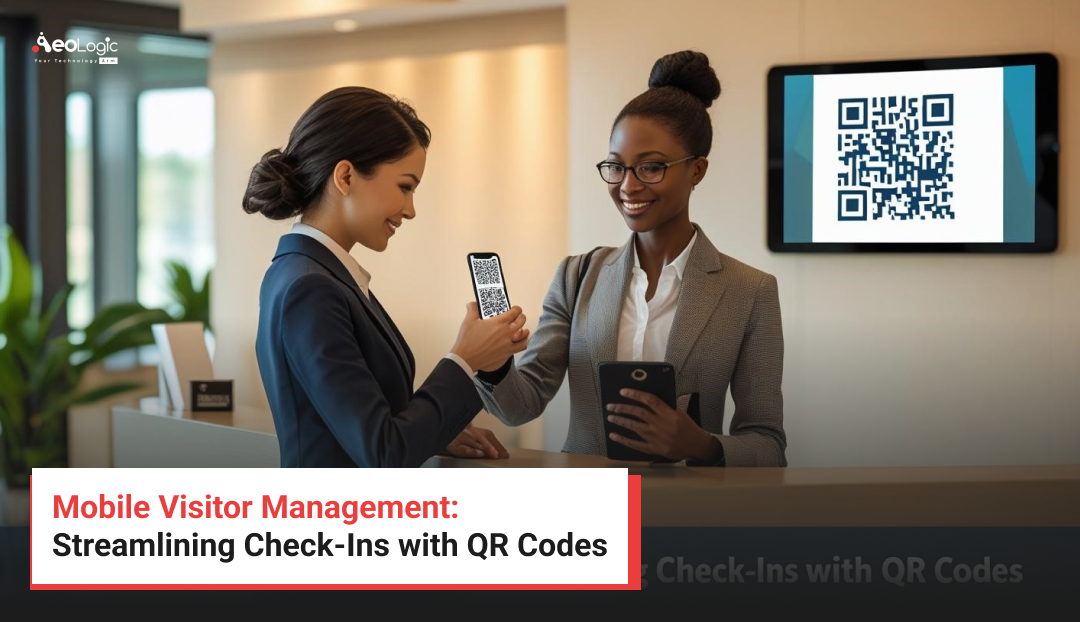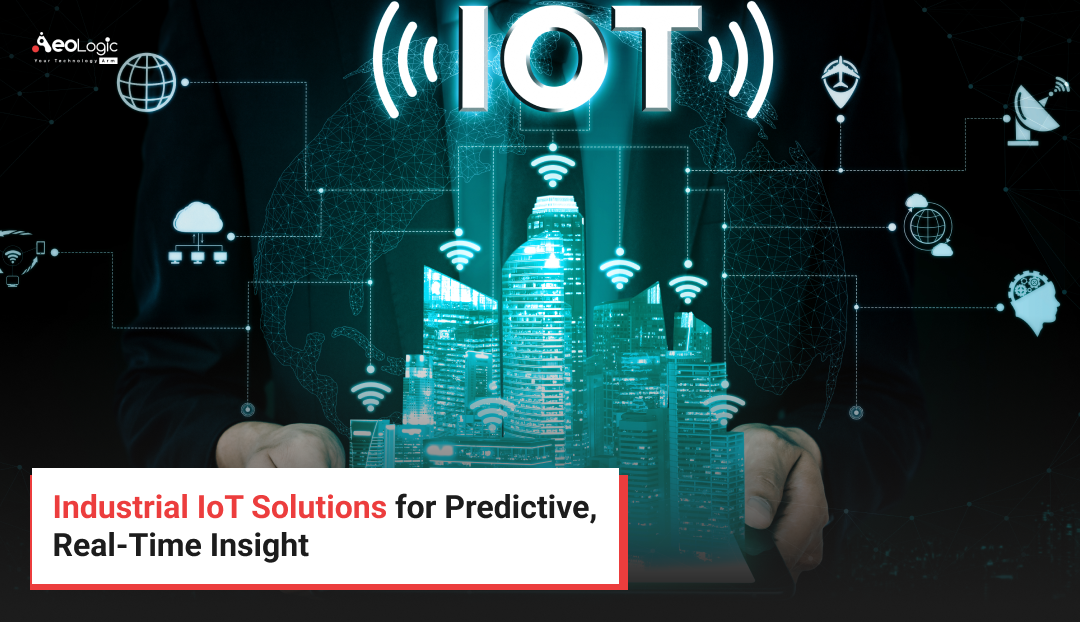Modern workplaces are experiencing a technological change, which is inspired by the need for increased safety, spontaneous experiences and contactless operations. A major area of change is visitor management. As businesses open their doors to customers, partners, contractors and other visitors, there is a pressure demand to manage access and interaction more wisely. Traditional visitor check-in procedures were time-consuming and prone to errors. Manual sign-in sheets, physical ID verification, and waiting on the front desk not only delayed, but also increased concerns around data security and hygiene. In an era where security, speed, and efficiency are paramount, the mobile visitor management system provides a strong solution.
These systems are designed to digitize and automate the entire check-in experience using smartphones and cloud-based platforms. In this process, the integration of the QR code adds an additional layer of speed and contactless interactions, ensuring that the journey of each visitor’s journey is smooth and safe.
Imagine this scenario: A visitor receives a pre-regulation email with a safe link for a digital form. After filling the required details such as names, travel purpose and host information, they receive a personal QR code. On reaching the office, they only scan this QR code at a self-service kiosk or security door. Within seconds, they are examined, and their hosts are automatically informed.
Mobile Visitor Management System
This system eliminates queues, reduces administrative charge, and reduces human contacts-also important in the post-pandic era. In addition, real -time visitor data is safely stored in the cloud, insight and audit trails are offered to convenience managers and security teams.
Mobile visitor management systems are not limited to check-in alone. Many platform meetings offer room booking facilities, allowing seamless scheduling and visitors to guide their destinations directly. With GPS tagging, interactive office maps and automatic directions, visitors will no longer wait for or ask for help in navigating in the premises.
Adopting mobile visitor management systems is a will for the developed nature of workplace operations. The business-corporate offices and healthcare facilities of industries, from co-competing places and educational institutions-are recognizing the value of a smart, skilled and clean approach for the management.
In the following sections, we will find out how QR code enhances this experience, such systems, the advantages of adopting cases of real -world use, integration options and implementation tips. As you will see, mobile visitor management is not just a trend – this is an important component of the digital workplace revolution.
The Need for Smarter Visitor Management
Traditional visitor management methods are not only old, but also incompetent and unsafe. Paper-based logs may lose, be difficult to analyze, and may be prone to human error. The reception desks can quickly be congested with long queues, which slows down the visitor and creates disappointment for both guests and employees. It negatively affects productivity and hinders the company’s ability to create a positive first impression.
In addition to operational disabilities, the old systems gave rise to serious safety concerns. The visitor logs left on the front desk are accessible to any person who enhances privacy issues. Who are in the building at any time manual records, it is difficult to offer audit and limited visibility. In emergency situations, such as fire drills or lockdown landscapes, reconstructing accurate visitor data becomes an important challenge.
The health and safety concerns in the pandemic world have further exposed the inadequacy of traditional methods. Organizations are now expected to provide touchless, clean experiences to reduce the spread of viruses and maintain safe work environment. Paper sign-in and pen or ID badge distribution introduced unnecessary contact points that modern systems can easily eliminate.
Mobile visitor management system
Mobile visitor management system. These digital platforms modernize the entire check-in and tracking process. By taking advantage of smartphones and QR code technology, companies can provide a streamlined, contactless experience from that time until a visitor is invited to leave the campus. This not only improves operational efficiency, but also increases overall visitor experiences, leading to imprint of innovation and professionalism.
With pre-registration capabilities, visitors can fill their details before reaching. The system then generates an individual QR code, which the visitor presents in a kiosk or access control system on arrival. Their entry is automatically logged, and their hosts receive a quick notification. The entire process takes just a few seconds, cuts a lot in waiting time and reduces the burden on front-desks.
In addition, the mobile visitor management system supports real -time analytics and reporting. Facilitation managers can use dashboard that display appliances for visitor volumes, peak traffic time and even health and safety forms. These insights enable data-powered decisions for better space use and resource allocation.
Today’s hybrid work in the environment, where the flexible scheduling is common and the appearance of the employee varies daily, knowing who is in the building – and why – is necessary. Smart visual management equipment helps maintain accurate occupants, support emergency preparations and ensure compliance with data safety rules.
Finally, the need for smarter visitor management stems from the convergence of three major priorities: operational efficiency, safety and visitor experience. Business adopting digital, mobile-first solutions is not only addressing the current needs, but also proofing their operations to develop the dynamics of the workplace.
What is a Mobile Visitor Management System?
A mobile visitor management system (VMS) is a comprehensive digital solution designed to automate and optimize visitor check-in experience using mobile devices and cloud-based platforms. This allows visitors to register in advance, check the required documents, and physical contact and administrative overhead and check out all the QR code and check out in the office premises.
Unlike traditional check-in methods, mobile VMS platforms streamline the entire process using smartphones and intuitive interfaces. Visitors usually receive an invitation through email or text messages, allowing them to complete digital forms-like health announcements, NDA, or pre-visited screening questionnaire-before the prescribed journey. Once submitted, a unique QR code is generated, serving as a digital pass that grants access to reach on arrival.
Upon arriving at the office, the visitor scans the QR code only on a self-service kiosk, tablet or integrated access control system. The platform immediately logs on their entry, notes the host, and even a temporary badge for identification. It eliminates long waiting time, enhances security, and frees the front-desk workers from repetitive administrative functions.
Mobile visitors include key features of management systems:
QR Visitor Form: Visitors fill customized digital forms that can capture personal details, go to purpose, vaccination status, or necessary compliance information. These forms can be designed to match the unique policies of various departments or entry points.
Contactless office entry: With pre-pronounced QR code, visitors no longer need to interact with receptionists or touch communal surfaces. It improves hygiene and supports the social disastering protocol.
Real-Time Visitor Tracking: Facilitation Manager Access to Live Dashboard that shows who are currently on the site, their check-in time, and which host or department they are going to. This is important for emergency plan and construction of construction occupation.
Automatic badge printing: Some systems can automatically print visible badges on QR code scanning. The badge may include names, photos, host details or color coding based on visitor types (eg, guest, contractor, interviewer).
Host notification: As soon as a visitor is investigated, their hosts are notified through email, SMS or in-app alert. This ensures timely greetings and reduces the need to wait unattained for visitors.
Meeting Room Booking Integration: Mobile VMS platform can integrate with office scheduling tools such as Microsoft Outlook or Google Calendar so that they can automatically reserve the meeting room and add visitor information to specific events.
Overall, the mobile visitor management system provides a friction-free, professional and safe check-in experience that align with the demands of the modern workplace. They reduce costs, reduce risk, and leave a positive impression on each visitor running through the doors.
How QR Codes Revolutionize Check-Ins
QR code is central for mobile visitor management experience. They provide a sharp, safe and touch-free method for identification and access, making them the cornerstone of the digital check-in system.
Here is how the process works:
Pre-regulation: Visitors receive an email or SMS with a safe link for digital form. This form can be adapted to collect any necessary information, such as name, company, travel purpose, health announcements, or NDA.
Form Submission: Once the visitor fills the form and submits it, the data is safely stored in the cloud. The system values information and produces digital credentials.
QR Code Generation: A unique, time-bound QR code is generated and sent to the visitor. This serves as their digital key to obtain QR code entry.
Office entry: On arrival, the visitor scans the QR code on a check-in kiosk, access gate or tablet. The system logs on the trip, alerts the host, and can even trigger automated badge printing.
This process greatly moves in entry, reduces bottlenecks at reception, and eliminates the need for physical contact. This also ensures that each check-in is recorded in real time, making a digital log for compliance, security audit and emergency withdrawal.
In addition to improving efficiency and safety, QR code provides high level of flexibility. They can be integrated with a mobile app for turn style, lift, meeting room system and even indoor navigation. Time-sensitive or single-use QR code can further increase security by limiting unauthorized re-entry.
Ultimately, QR code provides a scalable, smart solution that enhances visitor experience by supporting the operation and compliance requirements of modern workplaces.
Overall, the mobile visitor management system provides a friction-free, professional and safe check-in experience that align with the demands of the modern workplace. They reduce costs, reduce risk, and leave a positive impression on each visitor running through the doors.
Benefits of Mobile Visitor Management with QR Codes
Strong mobile visitor management systems by QR code provide many advantages that address both day-to-day office needs and long-term strategic goals. Here are the major benefits:
Safety: With digital records and real-time visitor tracking, the organizations receive full visibility on who are in the building at any time. QR-based check-in prevent unauthorized access and allow quick audit or data recover in emergency situations.
Office entry: QR code eliminates the requirement of physical interactions on the check-in desk. Visitors can scan their code directly from their smartphone, reduce the risk of surface contamination and align with developing health and safety protocols.
Skilled meeting room booking: Mobile visitor management systems are often integrated with room scheduling tools, which enable automatic room assignments for visitors. This ensures that visitors are directed at the correct meeting location without additional assistance or confusion.
First impression improved: A fast, user-friendly check-in experience indicates professionalism and an forward-thinking mindset. When visitors are welcomed with a smooth, technical-powered process, it makes a well-organized and a permanent impression of the modern workplace.
Analysis and reporting: Real-time dashboard and reporting tools allow feature managers to monitor visitors, identify peak check-in hours and track matrix such as dwell time. These insights indicate better staffing decisions and help to customize space use and visitor flows.
Cost effective and scalable: Mobile visitor management system reduces the need for physical infrastructure such as sign-in register and badge printers, by centralizing operations in clouds. These platforms can be easily scale to adjust additional office locations, floors or departments without a significant cost increase.
Whether an organization is small or enterprise-level, these systems increase operational efficiency, reduce the risk, and provide a positive visitor experience-all the simple till still powerful use of the QR code technology.
Integration with other office systems
A strong mobile visitor can be integrated with the management system:
Access Control System: Grant or restricted entry based on visitor credentials.
Calendar platform: sink with Google calendar or outlook to complete scheduling.
CRM and HR Software: Import/Export Visitor data for better relations and compliance management.
Facilitation Management Equipment: Ensure room availability and hygiene post-visits.
Use cases in various industries
- Corporate office Authentors of guest check-in, ensure employees safety, and originally manage the meeting logistics.
- Health facilities Apply strict visual control and hygiene protocol using contactless check-in.
- Educational institution Students and visitor should track access to administrative staff.
- Manufacturing plant Maintain security compliance and restrict access to dangerous areas.
- Co-functional location Manage a dynamic flow of guests, customers and freelancers efficiently.
Challenges and ideas
- Data privacy: Ensure GDPR and local data protection compliance.
- Internet dependence: Real -time updates require stable connectivity.
- User adoption: Some visitors may be unfamiliar with QR code or mobile forms.
- Integration complexity: Technical assistance may be required to sink with heritage systems.
Best practice for implementation
- Choose a scalable solution: Opt for platform growing with your business.
- Offer on-site support: Provide staff or signage to help users for the first time.
- Update the software regularly: Improve patch weaknesses and user experience.
- Train Employees: Ensure that reception staff and hosts understand the new system.
- Monitor and optimize: Use analytics for frequent sophisticated procedures.
Conclusion
Mobile visitor management system with QR code technology is explaining how welcome organizations and manage visitors. From increased security to seamless check-in and efficient meeting room booking, benefits are clear. By investing in a digital, contactless check-in solution, companies can improve security, increase visual experience and increase operating efficiency. Since more workplaces embrace hybrids and flexible models, the ability to manage access and interaction will become even more assets.
With Aeologic Technologies as your trusted tech solution partner, you can leverage cutting-edge AI innovations to transform your contact center operations. The gen AI financial services are just beyond our imagination and have a brighter future than today. This not only improves the way of contact services but also introduces an innovation that is going to enhance the financial sector for a long time.
Scale enterprise mobility programs with a mobile application development company Noida delivering secure, compliant, and performance-driven mobile applications.
FAQs
Q1: Are QR-based visitor management systems safe?
Yes, they use encrypted QR code and safe cloud server to protect visible data.
Q2: Can I integrate the system with my current calendar?
Most modern solutions provide API integration with Outlook, Google Calendar and other tools.
Q3: What if a visitor does not have a smartphone?
A receptionist can assist with manual check-in or provide a printed QR code.
Q4: Internet required at a check-in point?
Yes, an internet connection is necessary to sync data in real time.
Q5: How long does it take to apply it?
Perinogen can range from a few hours to a few weeks, depending on the needs of your office size and integration.
Q6: What about compliance with data security laws?
Ensure that the provider complies with GDPR, CCPA and other relevant rules.

Led the end-to-end development of mobile applications across fintech, health, e-commerce, and AI-powered domains using Flutter (Dart) and native Android (Kotlin/Java). Delivered performant and secure apps with seamless cross-platform UX, integrated real-time features using Firebase, and implemented third-party services such as Stripe for payments, OneSignal for notifications, and AI APIs for personalized experiences. As a team lead, managed a squad of developers, drove Agile processes, performed code reviews, and ensured delivery of high-quality, scalable apps. Focused on clean architecture (MVVM, BLoC), CI/CD automation, and optimized user retention through thoughtful UI/UX.






